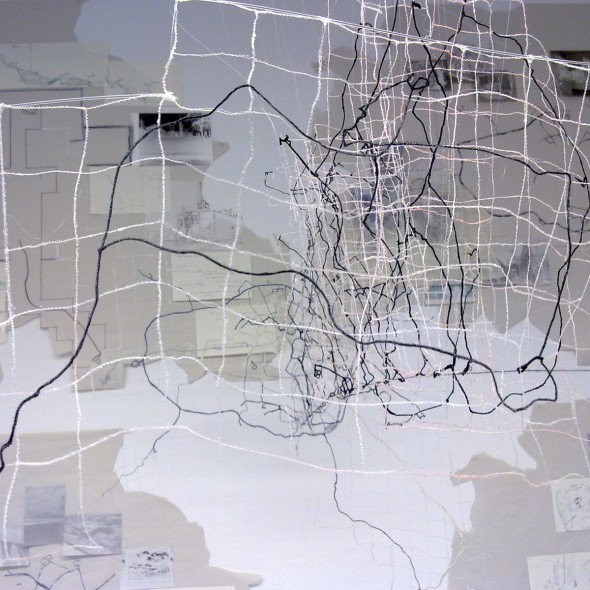„What can we learn from nature?“ was the topic of the Green Lab/ Green Design 2.0symposium on 5th april in Berlin, iniated by the Kunsthochschule Weissensee. In the first part of the day the theme was specially on „strategies and materials“, where we joined in to listen to different perceptions and implementations.
These talks were mainly coming from a very calculative and industrial point of view but also with a perception on what nature can tell us, what it reveals and leaves behind. For us this is something to reflect on as we have this diversity of nature and its ecology often implemented in our own work.
The topic nature comes along with a lot of discussion, about our ecology and resources that we try to overstep with our culture and inventiveness. We are trying to improve nature, but at the same time we dont know a lot about the processes what it beholds. Our culture extracts more and more facts and calculations to create bionomic solutions, extracting systems and methods and composing these into new material applications. It’s a technical discussion with a industrial demand what follows up with discussions around bioinformatic, that implement possibilities but also a mystery to understand for society. Our previous work with a bioinformatic institute also had this issue of not being understood, where science went beyond daily understanding:
What are we communicating and creating for the people who have to live with this?
What do we do about the human factor in what we extract from nature?
When we we look more closely at nature we becoming aware of the soft systems of nature. We are learning more deeper effects when stepping beyond the tools of calculated science and start taking notions of the social, informal, evolutional and relational levels that nature and our culture contains.
What is the quality and process of diversity and why are we working in opposite direction by making every design, policy and system common and global practicable?
The subtlety of diversity gives a rich information stream of connectivity, based on small changes and borders, all adapted a own locality, tactility and system, we are surrounded with the soft side of nature but it’s seems so unnoticed and undervalued when we are creating designs or policies. We should be more aware of the richness of the boundaries, the borders of systems and how these differences work together. Diversity brings a motion, a moving around, an adaption, leaving traces, stories, history and inventiveness, all adding into the move forward to create new life, new perceptions and new functions!
Generating value in making diversity is a true investment that delivers and equips a better understanding and practice instead of being a cost factor. Working with the soft systems justifies even more our investment in creating resilient experiences, designing a viable life. Rather then reducing the diversity we have to start working with the resilience that can be created as a strategy for thriving a better quality of living and working.
The insitute for biodiversity at the university of ontario leads leads the international program BOLD (Barcode of Life Datasystem). And there are other databases around the globe registering the diversity that the land contains, seeing the importance of the variety of species and how they are all adapted to their own locality and ecosystems.
Do we want to preserve what we have, hold on the fixed matter of databases or learning from nature and enabling new interpretations for living and working? It is the task of us as designers to expand our perspectives by looking closer at the function of diversity in nature!
